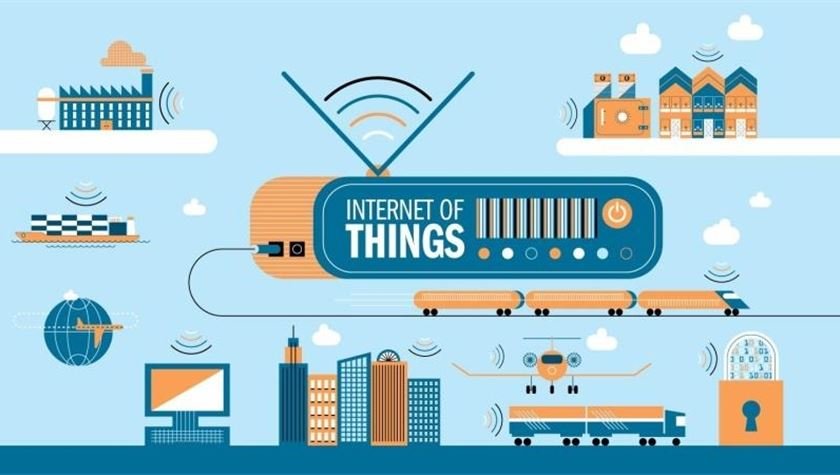
In today’s digitally interconnected society, people have instantaneous access to information and entertainment. Roughly half of all humans now have access to a mobile phone. Most homes in wealthy nations have internet access. We use them for everything from work and play to shopping, entertainment, research, and communication. By 2025, it’s expected that one trillion gadgets will have internet access.
The IoT’s Driving Forces
The Internet of Things is revolutionizing the corporate sector by allowing for increased productivity. Apple has been at the forefront of one of the most transformative technological developments of the previous century: the mobile phone. The first wave of this expansion will be driven mostly by wearable technologies. Today, the following technologies are the primary forces behind the IoT:
Devices for the Body: The market for the IoT will be propelled by wearable gadgets like the Apple Watch and a slew of other smart devices from businesses like Samsung, Google, Jawbone, Fitbit, Adidas, Pebble, Motorola, Johnson & Johnson, etc. There will be more than 485 million shipments of wearable gadgets by 2018. Wearable, patchable, or implantable devices connected to your smartphone or tablet or a more specialized device like a hospital patient monitor, neuro-stimulator, or sleep apnea system, will inhabit body area networks with fewer development obstacles and lower infrastructure costs than larger networks. Examples of such devices include Google Glass and the Apple iWatch. Apple has paved the way for the widespread adoption of wearable devices, and now Microsoft, Blackberry, Google, and Samsung are following suit. Over the next three to five years, Credit Suisse forecasts that the market value of wearables will increase tenfold, from $3.1–$5.0 billion to $30.0–$50.0 billion.
Smart gadgets and related tech: The use of smartphones and other intelligent electronic devices is rising. These include low-power wireless connectivity, accurate, low-cost mobile sensors, and ultra-low-power processors.
The miniaturization of Devices: Recent advances in integrated circuit fabrication and packaging have allowed complete wireless sensor packages to occupy as little as one cubic millimeter.
Cloud Computing & Big Data: The era of rapid adoption and maturation of cloud computing and Big Data analytics is here. In addition, they allow for processing information gathered by very large networks of sensors. Their work in creating new sensor applications and making them widely available for the IoT market drives the need for wireless sensors. The proliferation of cloud computing, data analytics, and social media contributes to an environment where the Internet of Things can flourish.
Opportunities and threats for wearable Internet of Things devices and software
1) Data Resolution of Wearable Sensors
Because of the need for wearable IoT devices to be miniaturized/small in size for comfort in wearing and low energy retirements, the gadgets in this category have lower resolution than their non-wearable counterparts.
2) Power Consumption
Optimizing power usage is a major issue for wearable devices so that they can function longer without recharging.
3) Safety
Security is an issue for any IoT wearables since they employ wireless networks to send the data collected to a central location. Because the transceiver antennas are so close to the user, radiofrequency radiation from the transmission can harm their health.
4) Security
Making the system secure while being user-friendly is a major problem for wearable IoT apps. Wearables are generally vulnerable to hacking because of inadequate encryption and security.
5) Regulation
The need for appropriate rules is currently a barrier to the adoption of wearable IoT devices in many businesses. For instance, wearable Internet of Things devices are technically conceivable but still need to be implemented in sports grounds and arenas due to regulatory hurdles.
6) Confidentiality
When using an IoT wearable app, sensitive information such as crucial health signals, dose, and location is routinely transmitted from the wearable to the IoT system. Privacy concerns may arise as a result of this.
The potential and use of wearable Internet of Things devices are virtually limitless. Connecting wearables to the Internet of Things opens up many exciting possibilities.
Conclusion
Finally, Internet of Things (IoT) wearable technology is advancing swiftly and altering our daily routines and working environments. The demand for smarter, more handy gadgets is driving innovation in the wearable Ios market. If you are interested in building IoT Softwares, you can get in touch with an IoT development company in Dubai. Keeping abreast on the intriguing subject of wearable IoT technology is crucial in light of its rapid development and expansion. So, if you’ve thought of a way to use Internet of Things (IoT) technologies in your business and want to talk about it, you can reach out to us.
Silvi Willemson is a tech blogger and an avid reader. She has written various blogs and articles about the latest developments in blockchain technology like StepN clone, Metaverse, AI and IoT Development. When she is not researching or writing, she is probably playing Call of Duty, she is an avid gamer too!
